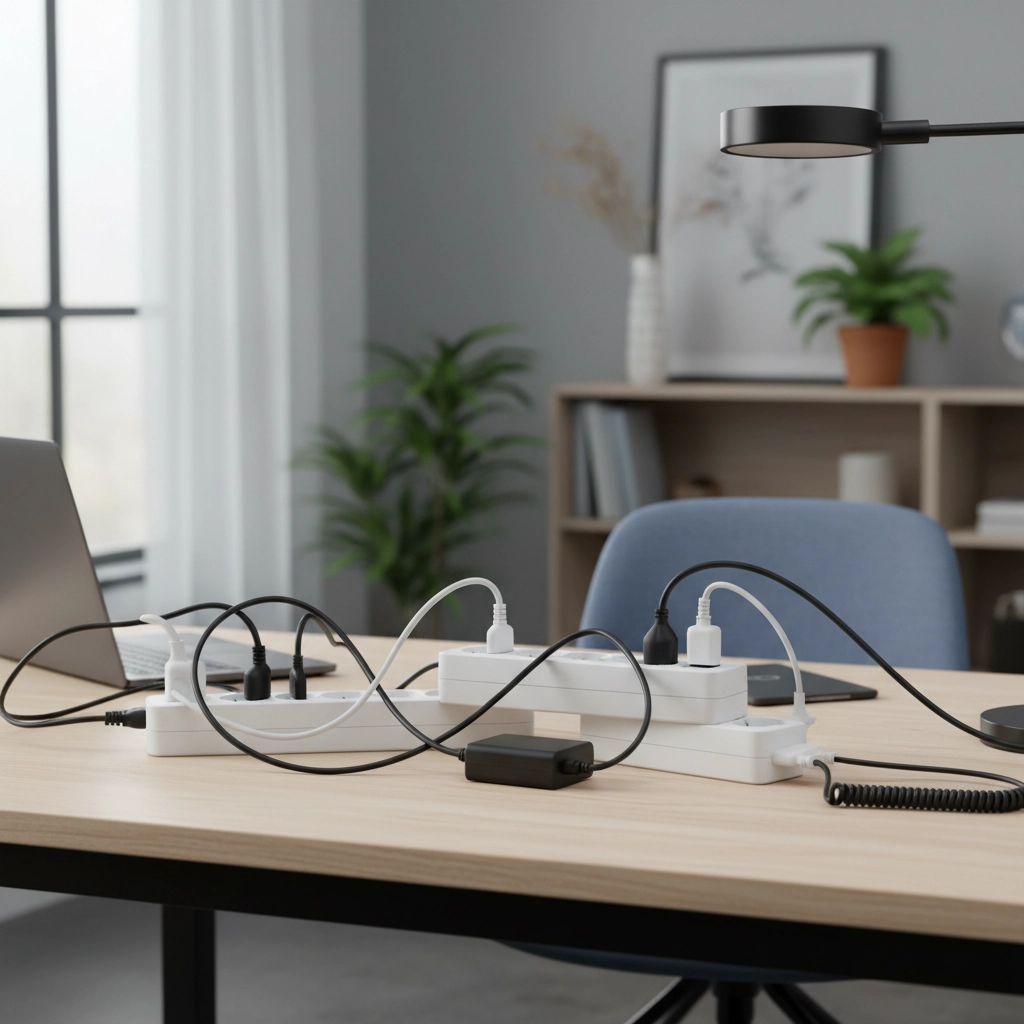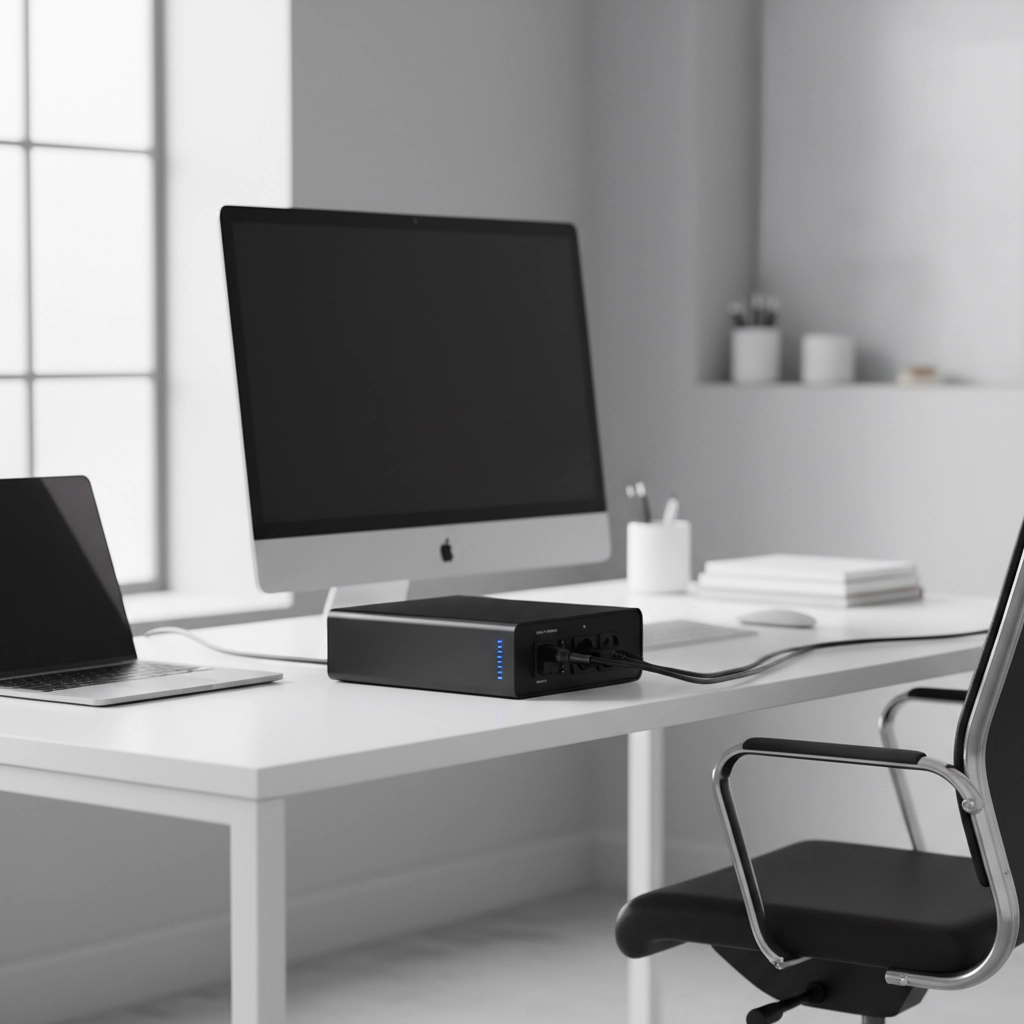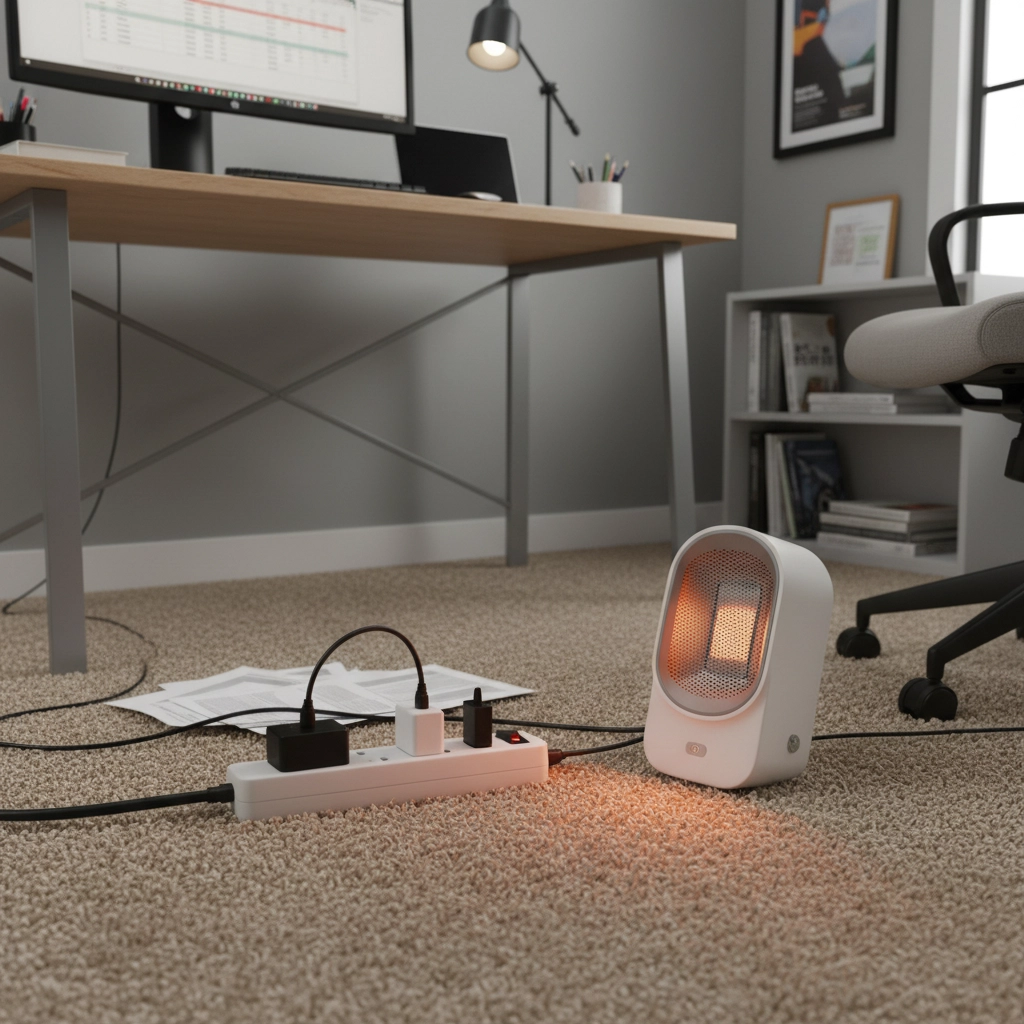
7 Mistakes You're Making with Home Office Power Protection (and How to Fix Them)
Share
Working from home changed everything about how we use power in our living spaces. Your spare bedroom or kitchen table is now mission control for video calls, file transfers, and keeping multiple monitors humming all day long. But here's the thing: most of us are making some pretty serious power protection mistakes that could fry our equipment or worse.
Let's dive into the seven most common home office power blunders and how to fix them before they become expensive problems.
Mistake #1: Treating Every Power Strip Like It's the Same
Here's a reality check: that $5 power strip from the hardware store isn't the same as a quality surge protector. Many remote workers grab whatever's cheapest and call it a day, but this approach can cost you big time when a power surge hits.
The Fix: Invest in a real surge protector with a decent joule rating: look for at least 1,000 joules for basic protection, but 2,000+ is better for valuable equipment. Check for an indicator light that shows the surge protection is still working. Once that protection burns out (which happens after absorbing surges), you're back to using an expensive extension cord.
Quality brands like APC by Schneider Electric offer surge protectors specifically designed for home offices, with features like USB charging ports and spacing for larger adapters.
Mistake #2: Playing Power Strip Jenga

You know what I'm talking about: plugging one power strip into another because you ran out of outlets. It seems harmless, but daisy-chaining power strips is like playing electrical Russian roulette. You're asking for overloaded circuits, tripped breakers, or worse.
The Fix: Stop the daisy-chain madness. If you need more outlets, get a single power strip with more sockets or have an electrician install additional wall outlets. Your home office probably needs more permanent power solutions anyway, especially if you're running multiple monitors, printers, and other equipment all day.
Consider having a dedicated 20-amp circuit installed for your office space: it's an investment that pays off in reliability and safety.
Mistake #3: Extension Cord Confusion
Not all extension cords are created equal. Using a lightweight indoor cord for heavy-duty equipment or running it across high-traffic areas creates hazards you don't need. The wrong gauge wire can cause voltage drops that damage sensitive electronics.
The Fix: Match your extension cord to the job. For computer equipment and monitors, use a 12-gauge cord for runs over 25 feet. Keep cords organized and off the floor where they won't get damaged or create tripping hazards.
Better yet, minimize extension cord use altogether. They're meant to be temporary solutions, not permanent wiring for your home office setup.
Mistake #4: Skipping UPS Protection Entirely

Power outages don't just shut down your computer: they can corrupt files, damage hard drives, and kill productivity for hours while systems recover. Yet many home workers skip uninterruptible power supplies (UPS) completely, thinking surge protection is enough.
The Fix: Get a UPS system that gives you enough runtime to save work and shut down properly during outages. For a basic home office setup with a computer and monitor, a 600VA UPS should provide 10-15 minutes of backup power.
Look for features like automatic voltage regulation (AVR) that smooths out power fluctuations throughout the day. Brands like CyberPower offer affordable home office UPS units that can keep your workflow uninterrupted during brief outages and provide clean power during voltage sags and spikes.
Mistake #5: The Cable Chaos Disaster
Tangled cords under your desk aren't just an eyesore: they're a safety hazard and maintenance nightmare. When cords are pinched, bent, or damaged from being stepped on, they can short out or overheat.
The Fix: Invest in proper cable management. Use cable trays, clips, or raceways to keep cords organized and protected. Route power cables away from foot traffic and avoid pinching them between furniture and walls.
Good cable management also makes troubleshooting easier when something goes wrong. You'll actually be able to trace which cord goes where without crawling around on the floor with a flashlight.
Mistake #6: Plugging Space Heaters into Power Strips

Winter hits, your home office gets cold, so you plug a space heater into your power strip. This is a classic mistake that causes house fires every year. Power strips aren't designed to handle the high amperage draw of heating appliances.
The Fix: High-wattage appliances always go directly into wall outlets. This includes space heaters, hair dryers, coffee makers, and any other device that generates heat. Check the device label: if it draws more than 10 amps, it needs its own dedicated outlet.
If your office space gets cold, consider having an electrician install a dedicated circuit for heating, or look into more efficient heating solutions that don't overload your electrical system.
Mistake #7: The "Set It and Forget It" Approach
You set up your home office once and never think about electrical safety again. Meanwhile, cords wear out, surge protectors lose their effectiveness, and equipment ages: but nobody's paying attention until something fails.
The Fix: Make equipment inspection a monthly habit. Check cords for damage, test your UPS backup system, and replace surge protectors that have absorbed significant surges (most have indicator lights for this).
Feel outlets and power strips: if they're warm to the touch, something's wrong. Look for scorch marks, unusual odors, or flickering lights that could indicate developing electrical problems.
Keep a simple maintenance log of when you installed equipment and when surge protectors were last replaced. Most quality surge protectors should be replaced every 3-5 years, depending on your area's power quality and storm activity.
The Bottom Line
Your home office electrical setup doesn't have to be complicated, but it does need to be safe and reliable. These seven mistakes are easy to fix once you know what to look for, and addressing them now prevents bigger problems down the road.
Remember, your home office is a business investment. Protecting that investment with proper power protection makes financial sense, whether you're saving client files or just trying to avoid the frustration of lost work during a power outage.
Ready to upgrade your home office power protection? Check out our selection of UPS systems, surge protectors, and professional-grade power solutions at Ace Real Time Solutions. We can help you build a reliable power protection system that keeps your home office running smoothly, no matter what the power grid throws at you.
Don't wait for a power problem to teach you these lessons the hard way: take action now and work with confidence knowing your equipment is protected.
